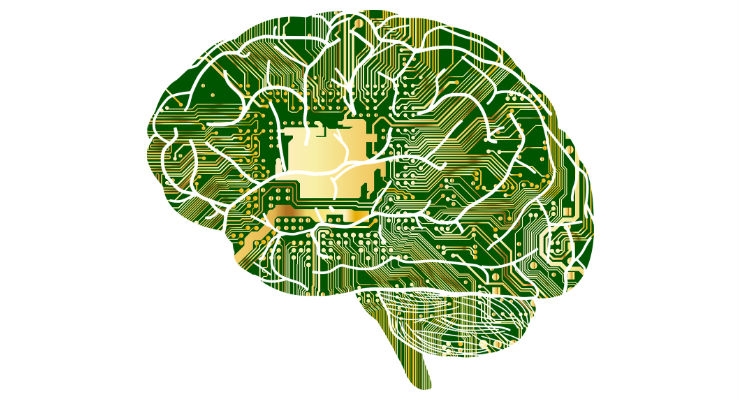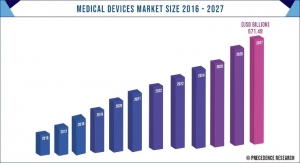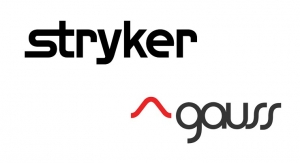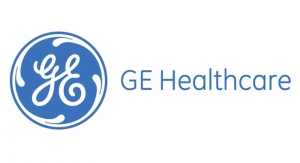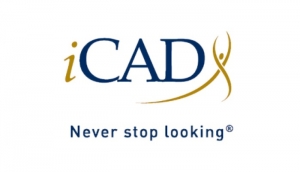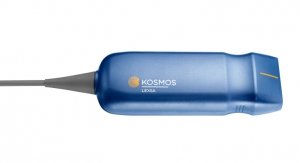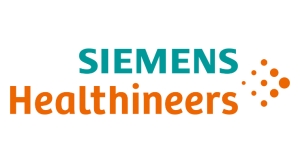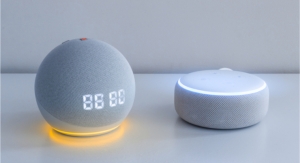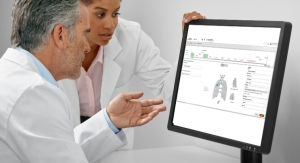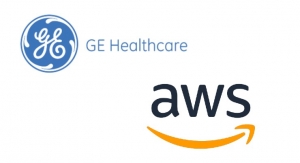Maria Shepherd, President and Founder, Medi-Vantage06.13.19
At the 5th Annual World Medical Innovation Forum (WMIF), hosted by Partners HealthCare, three days of panels and presentations highlighted new applications of artificial intelligence (AI) machine learning and natural language processing technologies in medical devices and healthcare.
Digital health is on fire, and the application of AI in digital health and medical devices is the flame that burns the brightest. According to a new report, Q1 2019 VC funding for digital health startups grew to $2 billion globally in a total of 149 funding deals (Table 1).1
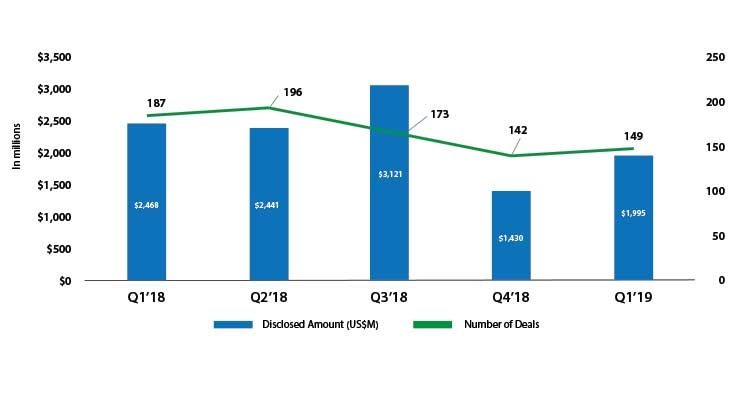
Table 1: Digital health VC funding (Q1 ‘18-Q1 ‘19)1
At the MDG (Medical Development Group) meeting in Boston in early May 2019, two panelists at the event, “Pathways to Success for MedTech Startups,” were asked, “What percent of the devices you invest in have a digital component? How will that percentage change over the next 10 years?” Ibraheem Badejo, senior director of new ventures at the Johnson & Johnson Innovation Center said, “I don’t know if I can give you a percentage, but J&J is making substantial investments in digital health platforms. For example, we just acquired Auris Health—a medical device company that develops a robotics platform for use in endoluminal procedures and lung cancer diagnosis—and I expect to continue leveraging digital platforms in our medical businesses.”
Another panelist, a member of a venture capital firm, said, “I estimate that 20 percent of the opportunities we assess have a digital component. While I can’t say by how much, I expect this percentage to increase over the next 10 years.”
Nancy Briefs, the panel’s moderator and a serial entrepreneur in the process of launching her seventh medical device startup—Altrix Bio—said, “Detection, monitoring, and diagnosis are all areas where AI/machine learning can bring value in healthcare. Digital health promises to enable earlier interventions, reduce the overall and growing costs, and provide better outcomes. Digital health yields a lot of data, but having something ‘actionable’ is key to its utility for clinicians.”
Why This Is Important
Estimates vary, but according to market research reports, the artificial intelligence market in healthcare was valued at $2.1 billion in 2018 and is projected to grow to $36.1 billion by 2025—a CAGR of 50.2 percent.2 The greatest unmet need in the digital health market is to reduce U.S. healthcare costs, which have topped $3.5 trillion.3 Other factors driving the growth of AI and digital health are improved computing power, machine learning and natural language processing technologies, rapid 5G (fifth-generation cellular wireless technology), and the declining cost of hardware.
Use Case—Reducing Errors in Diagnosis
What makes the WMIF such a great meeting is so many use cases are presented by the best and brightest clinicians at Partners Healthcare. For example, missed diagnoses are one of the leading causes of preventable adverse events in healthcare, and diagnostic errors result in death or injury to 40,000 to 80,000 patients per year.4 Diagnostic error is a challenge for all medical specialties and the overall misdiagnosis rate is estimated at 10 to 15 percent.4
DXplain is a clinical decision support tool developed at the Massachusetts General Hospital.5 It uses AI and machine learning to review the set of conditions or diagnoses a clinician should consider based upon the symptoms a patient presents. Uncommon or atypical conditions are also offered by this AI-driven tool.
Tools like DXplain that use AI to aid clinical diagnosis are still in the very early stages, but studies are emerging that prove the benefit. A 2017 Stanford study tested an AI diagnostic against 21 dermatologists on the comparative ability of each to identify skin cancer.6 The clinical findings found the AI diagnostic algorithm was as accurate in diagnosing skin cancer as the cohort of dermatologists.7
Common Types of Diagnostic Errors
Misdiagnoses can have serious outcomes. An observational study found the most commonly encountered misdiagnoses were pneumonia, decompensated congestive heart failure, acute renal failure, cancer, and urinary tract infection (Table 2).8
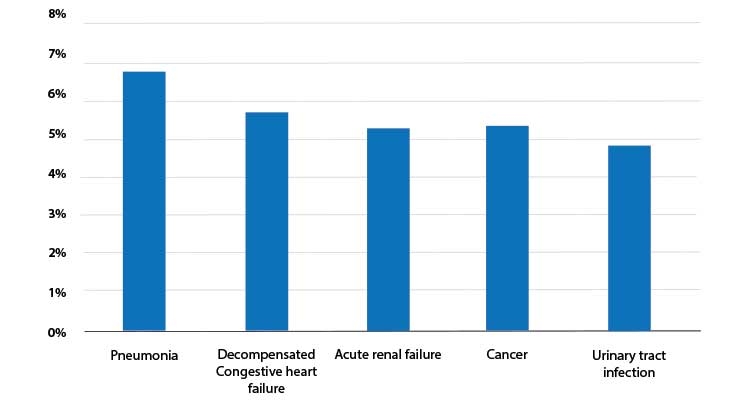
Table 2: Most commonly encountered misdiagnoses8
Dermatology and the ability to diagnose skin cancer are not the only areas where AI adds value in diagnostics. AI is projected to be a game-changer with new applications for reading and interpreting MRI and other imaging tools. In pathology, there are multiple emerging applications that will rely on AI and machine learning for high-volume or quantitative evaluations.
AI and natural language processing can help reduce the burden of healthcare administration for clinicians, a necessary but time-consuming task that takes valuable time away from treating patients. By applying AI-facilitated automation in insurance claims management, tedious and often repetitive tasks, such as prior authorizations, will take away less valuable clinician time. In a report from the AMA, prior authorizations are one of many types of administrative processes that eat up approximately 50 percent of a physician’s office time. Less than 30 percent of the day is spent on direct clinical care.9 These distractions from patient care are an enormous source of professional discontent.
AI is contributing to new approaches in ophthalmology that can improve patient care for the detection of diabetic retinopathy. In 2018, the FDA approved a first-ever AI diagnostic tool that does not require additional ophthalmologist review and can be used in primary care and areas with few expert medical resources.10 The segment of patients with diabetes is greater than 30 million people in the U.S., so this tool brings care to many Americans that otherwise would not have access (Table 3).11
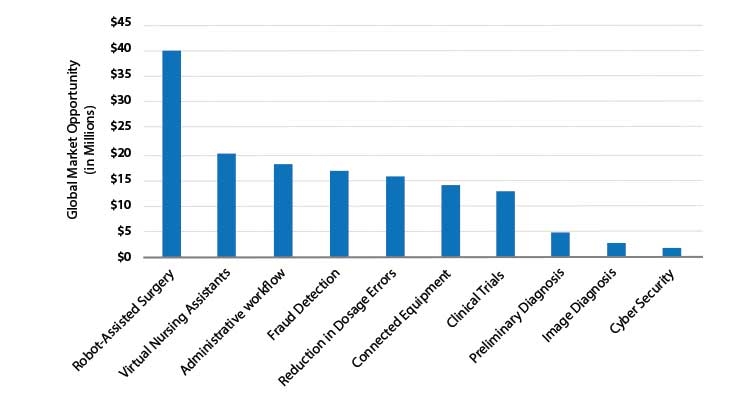
Table 3: Market potential for ten AI applications in healthcare11
The implications for AI in patient monitoring are substantial. For example, Real time EEG will automate EEG analysis so clinicians can quickly detect and treat electrical aberrations to improve patient care. In current scenarios, clinicians read EEGs manually and intermittently—a tedious process. At the WMIF, it was reported that 30 terabytes of EEG data from thousands of patients have been analyzed to create deep learning algorithms to automatically detect seizures in patients in the ICU.
The Medi-Vantage Perspective
For medical device strategy developers, the WMIF is a great meeting to get inside the heads of physicians and other healthcare experts to find out what really matters to them. While clinicians were excited about new AI-based medical device technologies, they were equally as delighted with the potential of AI to give them more time to interact with their patients.
“We talk a lot now about how dehumanizing the electronic health record has been to healthcare,” said Gregg Meyer, M.D., chief clinical officer for Partners HealthCare.12 “I actually think in five to 10 years, we might capture the opportunity to use artificial intelligence to rehumanize healthcare, actually give me the opportunity to be there with the patient, not sifting through things, not worried about filling out the billing forms, not worried about monitoring that follow up lab, but be with the patient, talking about their illness and working with them.”
References
Maria Shepherd has more than 20 years of leadership experience in medical device/life science marketing in small startups and top-tier companies. After her industry career, including her role as vice president of marketing for Oridion Medical, where she boosted the company valuation prior to its acquisition by Covidien/Medtronic, director of marketing for Philips Medical, and senior management roles at Boston Scientific Corp., she founded Medi-Vantage. Medi-Vantage provides marketing, business strategy, and innovation research for the medical device, diagnostic, and digital health industries. The firm quantitatively and qualitatively sizes and segments opportunities, evaluates new technologies, provides marketing services, and assesses prospective acquisitions. Shepherd has taught marketing and product development courses and is a member of the Aligo Medtech Investment Committee (www.aligo.com). She can be reached at 855-343-3100. Visit her website at www.medi-vantage.com.
Digital health is on fire, and the application of AI in digital health and medical devices is the flame that burns the brightest. According to a new report, Q1 2019 VC funding for digital health startups grew to $2 billion globally in a total of 149 funding deals (Table 1).1

Table 1: Digital health VC funding (Q1 ‘18-Q1 ‘19)1
At the MDG (Medical Development Group) meeting in Boston in early May 2019, two panelists at the event, “Pathways to Success for MedTech Startups,” were asked, “What percent of the devices you invest in have a digital component? How will that percentage change over the next 10 years?” Ibraheem Badejo, senior director of new ventures at the Johnson & Johnson Innovation Center said, “I don’t know if I can give you a percentage, but J&J is making substantial investments in digital health platforms. For example, we just acquired Auris Health—a medical device company that develops a robotics platform for use in endoluminal procedures and lung cancer diagnosis—and I expect to continue leveraging digital platforms in our medical businesses.”
Another panelist, a member of a venture capital firm, said, “I estimate that 20 percent of the opportunities we assess have a digital component. While I can’t say by how much, I expect this percentage to increase over the next 10 years.”
Nancy Briefs, the panel’s moderator and a serial entrepreneur in the process of launching her seventh medical device startup—Altrix Bio—said, “Detection, monitoring, and diagnosis are all areas where AI/machine learning can bring value in healthcare. Digital health promises to enable earlier interventions, reduce the overall and growing costs, and provide better outcomes. Digital health yields a lot of data, but having something ‘actionable’ is key to its utility for clinicians.”
Why This Is Important
Estimates vary, but according to market research reports, the artificial intelligence market in healthcare was valued at $2.1 billion in 2018 and is projected to grow to $36.1 billion by 2025—a CAGR of 50.2 percent.2 The greatest unmet need in the digital health market is to reduce U.S. healthcare costs, which have topped $3.5 trillion.3 Other factors driving the growth of AI and digital health are improved computing power, machine learning and natural language processing technologies, rapid 5G (fifth-generation cellular wireless technology), and the declining cost of hardware.
Use Case—Reducing Errors in Diagnosis
What makes the WMIF such a great meeting is so many use cases are presented by the best and brightest clinicians at Partners Healthcare. For example, missed diagnoses are one of the leading causes of preventable adverse events in healthcare, and diagnostic errors result in death or injury to 40,000 to 80,000 patients per year.4 Diagnostic error is a challenge for all medical specialties and the overall misdiagnosis rate is estimated at 10 to 15 percent.4
DXplain is a clinical decision support tool developed at the Massachusetts General Hospital.5 It uses AI and machine learning to review the set of conditions or diagnoses a clinician should consider based upon the symptoms a patient presents. Uncommon or atypical conditions are also offered by this AI-driven tool.
Tools like DXplain that use AI to aid clinical diagnosis are still in the very early stages, but studies are emerging that prove the benefit. A 2017 Stanford study tested an AI diagnostic against 21 dermatologists on the comparative ability of each to identify skin cancer.6 The clinical findings found the AI diagnostic algorithm was as accurate in diagnosing skin cancer as the cohort of dermatologists.7
Common Types of Diagnostic Errors
Misdiagnoses can have serious outcomes. An observational study found the most commonly encountered misdiagnoses were pneumonia, decompensated congestive heart failure, acute renal failure, cancer, and urinary tract infection (Table 2).8

Table 2: Most commonly encountered misdiagnoses8
Dermatology and the ability to diagnose skin cancer are not the only areas where AI adds value in diagnostics. AI is projected to be a game-changer with new applications for reading and interpreting MRI and other imaging tools. In pathology, there are multiple emerging applications that will rely on AI and machine learning for high-volume or quantitative evaluations.
AI and natural language processing can help reduce the burden of healthcare administration for clinicians, a necessary but time-consuming task that takes valuable time away from treating patients. By applying AI-facilitated automation in insurance claims management, tedious and often repetitive tasks, such as prior authorizations, will take away less valuable clinician time. In a report from the AMA, prior authorizations are one of many types of administrative processes that eat up approximately 50 percent of a physician’s office time. Less than 30 percent of the day is spent on direct clinical care.9 These distractions from patient care are an enormous source of professional discontent.
AI is contributing to new approaches in ophthalmology that can improve patient care for the detection of diabetic retinopathy. In 2018, the FDA approved a first-ever AI diagnostic tool that does not require additional ophthalmologist review and can be used in primary care and areas with few expert medical resources.10 The segment of patients with diabetes is greater than 30 million people in the U.S., so this tool brings care to many Americans that otherwise would not have access (Table 3).11

Table 3: Market potential for ten AI applications in healthcare11
The implications for AI in patient monitoring are substantial. For example, Real time EEG will automate EEG analysis so clinicians can quickly detect and treat electrical aberrations to improve patient care. In current scenarios, clinicians read EEGs manually and intermittently—a tedious process. At the WMIF, it was reported that 30 terabytes of EEG data from thousands of patients have been analyzed to create deep learning algorithms to automatically detect seizures in patients in the ICU.
The Medi-Vantage Perspective
For medical device strategy developers, the WMIF is a great meeting to get inside the heads of physicians and other healthcare experts to find out what really matters to them. While clinicians were excited about new AI-based medical device technologies, they were equally as delighted with the potential of AI to give them more time to interact with their patients.
“We talk a lot now about how dehumanizing the electronic health record has been to healthcare,” said Gregg Meyer, M.D., chief clinical officer for Partners HealthCare.12 “I actually think in five to 10 years, we might capture the opportunity to use artificial intelligence to rehumanize healthcare, actually give me the opportunity to be there with the patient, not sifting through things, not worried about filling out the billing forms, not worried about monitoring that follow up lab, but be with the patient, talking about their illness and working with them.”
References
- http://bit.ly/mpo190601
- http://bit.ly/mpo190602
- http://bit.ly/mpo190603
- http://bit.ly/mpo190604
- http://bit.ly/mpo190605
- http://bit.ly/mpo190606
- http://bit.ly/mpo190607
- http://bit.ly/mpo190608
- http://bit.ly/mpo190609
- http://bit.ly/mpo190610
- http://bit.ly/mpo190611
- http://bit.ly/mpo190612 [video of the panel session]
Maria Shepherd has more than 20 years of leadership experience in medical device/life science marketing in small startups and top-tier companies. After her industry career, including her role as vice president of marketing for Oridion Medical, where she boosted the company valuation prior to its acquisition by Covidien/Medtronic, director of marketing for Philips Medical, and senior management roles at Boston Scientific Corp., she founded Medi-Vantage. Medi-Vantage provides marketing, business strategy, and innovation research for the medical device, diagnostic, and digital health industries. The firm quantitatively and qualitatively sizes and segments opportunities, evaluates new technologies, provides marketing services, and assesses prospective acquisitions. Shepherd has taught marketing and product development courses and is a member of the Aligo Medtech Investment Committee (www.aligo.com). She can be reached at 855-343-3100. Visit her website at www.medi-vantage.com.

